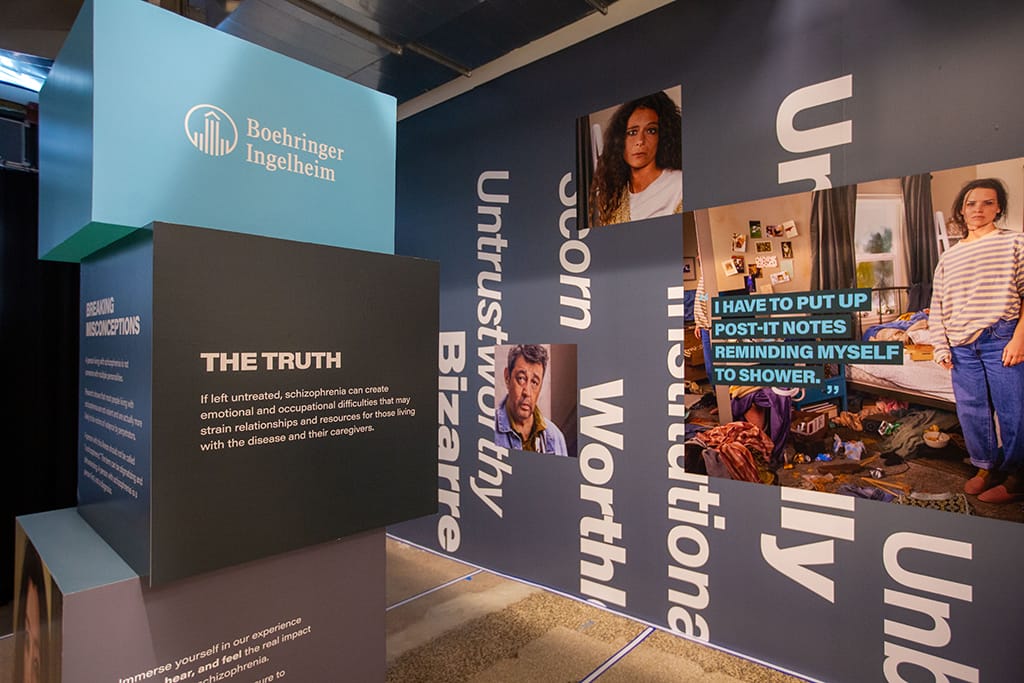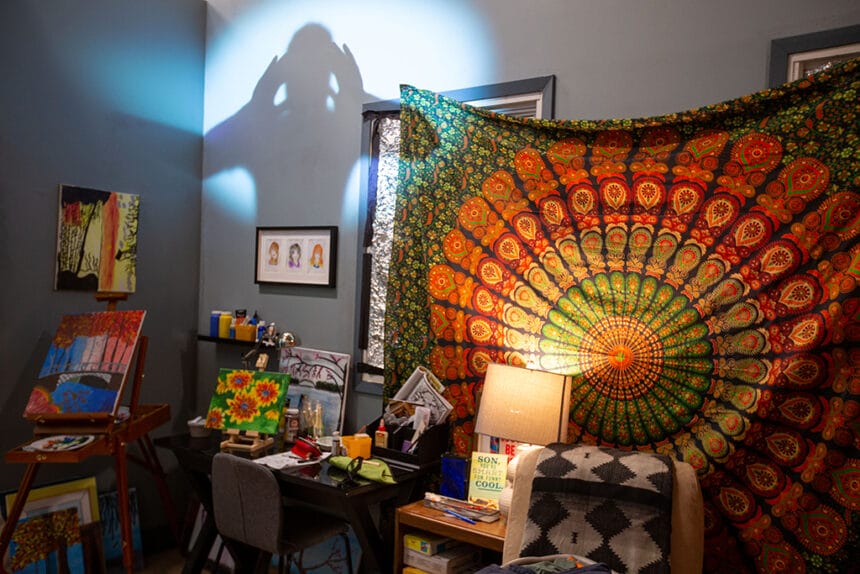Living with schizophrenia doesn’t always mean a person is violent or constantly in crisis, as stigma tends to make us assume.
Instead, this mental illness is often defined by the little struggles that occur in private, such as the inability to get out of bed, accomplish tasks, clean up or shower.
In an effort to raise awareness about what it’s like to live with schizophrenia, Boehringer Ingelheim recently brought the latest iteration of its Look Beyond Stable campaign, a live installation that allows people to walk in the shoes of someone living with schizophrenia, back to New York.
The installation is made up of various rooms laid out museum exhibit-style — a bedroom filled with laundry and trash heaps, a kitchen that looks like it hasn’t been cleaned in weeks, and visual effects that simulate hallucinations like shadows dancing on the walls.

Audio effects of racing thoughts allow viewers to experience what it’s like to be isolated at home and battling voices in your head.
Look Beyond Stable is part of BI’s ongoing effort to take apart stigmas related to schizophrenia and other mental illnesses. The drugmaker wants to educate the public with a museum-style experience rather than a traditional route like a website or a pamphlet.
The campaign follows up on a similar pop-up the pharma giant rolled out in December.
As viewers walk through the rooms, the installation explains how each room signifies different aspects of the three main symptoms of schizophrenia — positive, cognitive and negative.
Positive symptoms are associated with psychosis and can include delusions, hallucinations or disordered behaviors; while negative symptoms refer to a lack of motivation, isolation, depression or lacking emotion.
Cognitive symptoms are marked by difficulty in paying attention, problem-solving or managing social situations.
Michelle Hammer, a mental health advocate who lives with schizophrenia and founded Schizophrenic NYC, said the way the rooms were set up resonated with her, noting they felt familiar.
“Schizophrenia is very misunderstood,” Hammer told MM+M. “When people think of schizophrenia, they think of hopelessness, like the person will never get to do anything, or that they’re violent people. They don’t know that there’s no symptom that makes someone a violent person, but rather there are three different symptoms — positive, negative and cognitive. That’s what’s shown in each room.”
The reality for the majority of people with schizophrenia, Hammer explained, is that they often struggle quietly behind closed doors rather than having crises in public.
BI paid close attention to detail when constructing the rooms: In the kitchen, viewers were asked to open the fridge and smell the result of moldy food left there for weeks.
In the bedroom, repetitive thoughts flash across a computer screen amid empty takeout boxes and pill bottles: “I don’t care. Have nothing to say. I used to enjoy writing. Now I don’t.”
Hammer, who was diagnosed with schizophrenia at age 22, said she hopes the installation will help the public see people with schizophrenia with more compassion.
The exhibit holds power even beyond schizophrenia, as Hammer notes that many people who suffer from other mental illnesses like depression or anxiety can recognize some of the rooms.
“I would love to see more things like this when it comes to schizophrenia, or mental health, in general,” she said. “You could read a textbook or a pamphlet, you could read whatever you want. When you see something that’s immersively art and you can visualize and absorb it, it’s much easier to understand.”







